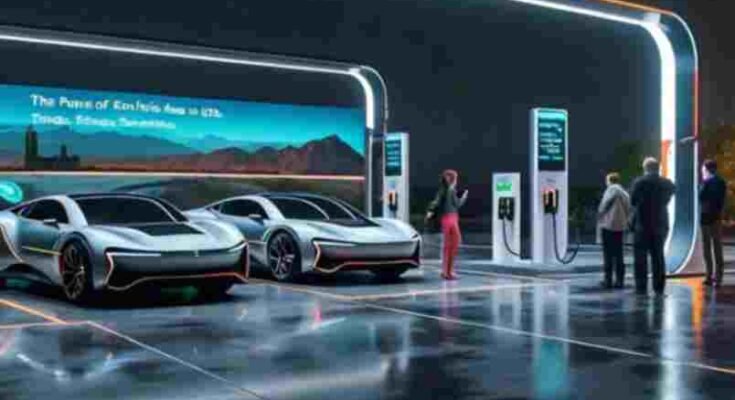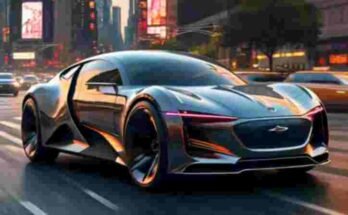Electric vehicles (EVs) are becoming an integral part of the automotive landscape in the USA. As the country seeks to reduce its carbon footprint and embrace sustainable energy solutions, the shift toward electric mobility is gaining momentum. This article explores the current trends, challenges, and opportunities shaping the future of electric vehicles in the USA.
Trends in the Electric Vehicle Market
Increasing Adoption Rates
The adoption rate of electric vehicles in the USA has been steadily increasing. With advancements in battery technology, reductions in manufacturing costs, and growing environmental awareness, more consumers are making the switch from traditional internal combustion engine vehicles to EVs. According to recent statistics, EV sales in the USA have been growing by double digits annually, a trend expected to continue as more affordable models enter the market.
Expansion of Charging Infrastructure
One of the critical factors driving EV adoption is the expansion of the charging infrastructure. The Biden administration has set ambitious targets to install 500,000 public EV chargers nationwide by 2030. This initiative aims to alleviate range anxiety, a common concern among potential EV buyers. Public and private investments are pouring into building a robust network of fast chargers, making long-distance travel more convenient for EV owners.
Technological Innovations
Technological advancements are at the forefront of the electric vehicle revolution. Companies like Tesla, Rivian, and Lucid Motors are pushing the boundaries of EV performance, offering vehicles with longer ranges, faster charging times, and enhanced autonomous driving features. Battery technology continues to evolve, with solid-state batteries and other innovations promising higher energy densities and longer lifespans.
Challenges Facing Electric Vehicles
High Initial Costs
Despite the decreasing cost of EVs, the initial purchase price remains a significant barrier for many consumers. Although federal and state incentives help offset some of these costs, electric vehicles are still generally more expensive than their gasoline counterparts. Addressing this challenge requires further reductions in battery production costs and increased economies of scale in EV manufacturing.
Limited Range and Charging Time
Although progress is being made, range anxiety and lengthy charging times remain obstacles to widespread EV adoption. While the average range of new EVs has improved significantly, it still falls short of the distances many consumers are accustomed to with gasoline vehicles. Moreover, even with fast chargers, recharging an EV takes longer than refueling a traditional car. Continued advancements in battery technology and charging infrastructure are essential to overcoming these hurdles.
Environmental Concerns
While EVs are touted for their environmental benefits, there are concerns regarding the environmental impact of battery production and disposal. Mining for lithium, cobalt, and other battery materials has significant ecological and social consequences. Additionally, the recycling of EV batteries is still in its infancy, posing challenges for sustainable end-of-life management. Developing greener battery technologies and robust recycling processes is crucial for the long-term sustainability of EVs.
Opportunities for Growth and Innovation
Policy Support and Incentives
Government policies and incentives play a pivotal role in accelerating the adoption of electric vehicles. The USA is implementing various measures to promote EVs, including tax credits, rebates, and grants for EV purchases and charging infrastructure development. Additionally, stricter emissions regulations and the phasing out of internal combustion engines in some states provide a favorable environment for EV growth.
Corporate Commitments
Major automotive manufacturers are making substantial commitments to electric mobility. Companies like General Motors, Ford, and Volkswagen have announced ambitious plans to electrify their fleets, investing billions in EV research and development. These commitments not only increase the availability of EV models but also stimulate competition and innovation within the industry.
Renewable Energy Integration
The integration of renewable energy sources with electric vehicle charging presents a significant opportunity for reducing the overall carbon footprint of transportation. Solar-powered EV charging stations and the use of smart grid technology can optimize energy use and storage, creating a more sustainable and resilient energy ecosystem. Collaborations between the automotive and energy sectors will be key to realizing this potential.
Conclusion
The future of electric vehicles in the USA is promising, driven by technological advancements, supportive policies, and increasing consumer awareness. While challenges such as high initial costs, limited range, and environmental concerns persist, the opportunities for growth and innovation are substantial. As the USA continues to invest in EV infrastructure and technology, electric vehicles are poised to become a dominant force in the transportation landscape, paving the way for a cleaner and more sustainable future.

